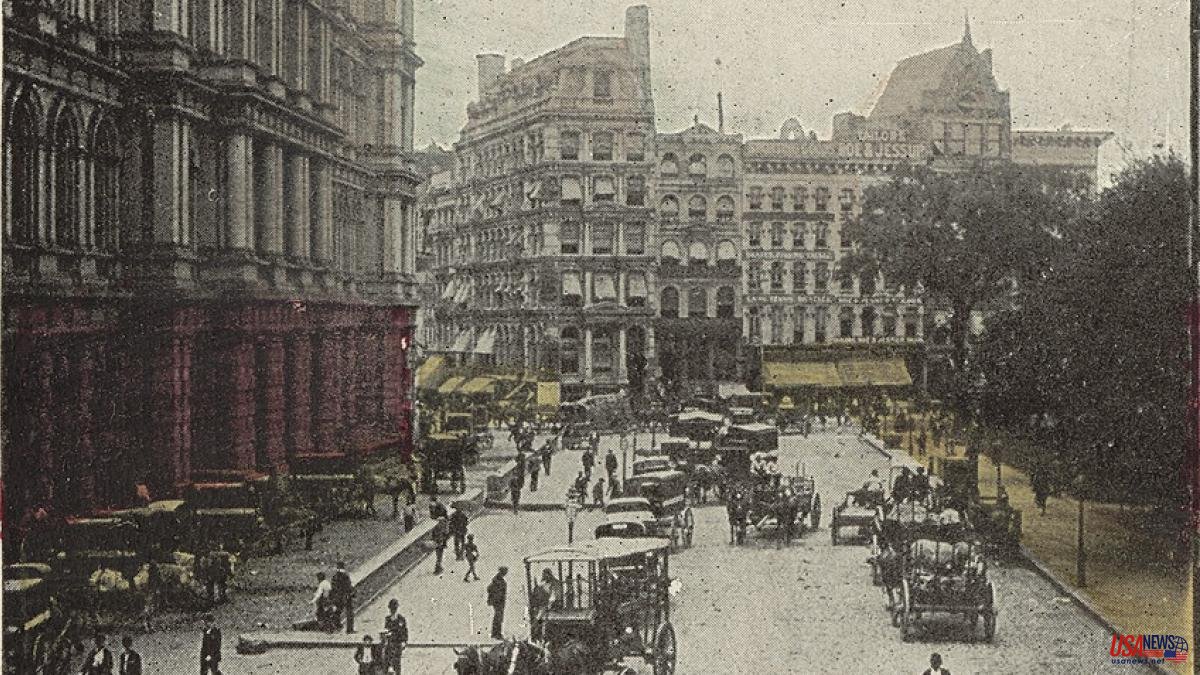Her first victim was the doctor who raped her when she was only 12 years old. Then there were many more. May Mallon left a trail of corpses since her arrival in New York from Hamburg in 1868. It is estimated that she caused hundreds of deaths. Mary was the "killing angel", even though she killed unintentionally. She carried the typhus virus and was asymptomatic. Jürg Federspiel recovered in La balada de María Tyfoidea, now published by Vegueta in Spanish, the story of Mary, the first diagnosed patient in history who did not present symptoms.
If she'd had another trade, it might not have become a lethal weapon, but Mary was a cook. She went to the bathroom, didn't wash her hands and then peeled potatoes, cut the lettuce and gave herself over to the chores of her trade, spreading germs on the food. Unfortunately for many, one of her first jobs was as a kitchen assistant at the St. Denis Hotel. Her job only lasted a few weeks, as the hotel was closed after a large part of her employees and clients died.
"Her illness, which she surely contracted on the ship that took her to America, caused an epidemic. What Mary had was salmonellosis, which today is not serious, but in the 19th century it was fatal due to poor hygiene measures and a lack of of antibiotics", explained doctor Carolina Gálvez on Thursday during the presentation of La balada de María Tifoidea on the terrace of the Santa Eulalia store in Barcelona.
What now is usually cured with a little rest and some medication was terrible in the time of Typhoid Mary. The symptoms appeared between one and three weeks after the infection: "headaches and extremities, confusion, nosebleeds, chills and high fever that gradually increased day by day." The temperature rose to 40 degrees. And that was just the beginning.
Then came hell, because "the body became inflamed and the spleen became sensitive to the touch, the stools were continuous and the mucous membranes dried up. The follicles of the intestine ulcerated and this could later produce liquid stools similar to pea soup , finally causing bleeding or intestinal perforations that led to peritonitis," says Federspiel in La balada de María Tyfoidea.
It is a raw, almost savage story typical of the late Swiss author who "wrote about the monstrosity of the small," as explained by the director of de Vegueta, Eva Moll de Alba, during the book presentation, who stressed that Federspiel (1931-2007 ) "was one of the great literary voices of the second half of the 20th century due to his modernity, since he was inspired by the news he read to write novels that were highly critical of society".
The story of Mary Mallon is not exempt from this critical point, because the author delves into issues such as the suffering of immigrants or the hypocrisy of New York high society. The girl Mary, of Swiss origin, arrived in New York after a long journey on the Leibnitz, a sailboat where "the air was so rarefied that it extinguished the flame of the lanterns, where there was not an inch of surface that was not smeared with excrement or vomit, where at times the screams of rats and men could be heard..." 544 emigrants were traveling on the ship. Upon arrival at their destination, 108 had died.
Mary was alive, but because of her beauty, in New York she became a potential victim of all kinds of abusers. The ballad of María Tifoidea is also "a topography of the city, its interiors and luxurious places where situations of exploitation take place," said the writer and essayist Eloy Fernández Porta, who accompanied Moll and Gálvez during the presentation of the book.
Jobs never lasted long for Mary Mallon, because her employers used to die suddenly after suffering these horrible symptoms, the young woman thus became "someone who carried chaos without realizing it" and also a kind of avenging angel, because "Those who tried to take advantage of her found their just comeuppance." For Fernández Porta, "that is the justice of nature, which Mary would never have found in a court of her time."
And the truth is that there was no justice for the "angel of death." An epidemiologist discovered it as early as 1907 after a wave of typhus that caused around 700 deaths. The investigator found Mary and after carrying out the pertinent tests, she learned that she was a carrier of the virus for this disease, although she had never presented any symptoms. Mary was locked up for decades so that she would stop contagious. "They confined her to her and not to the others, perhaps because of her social status."













